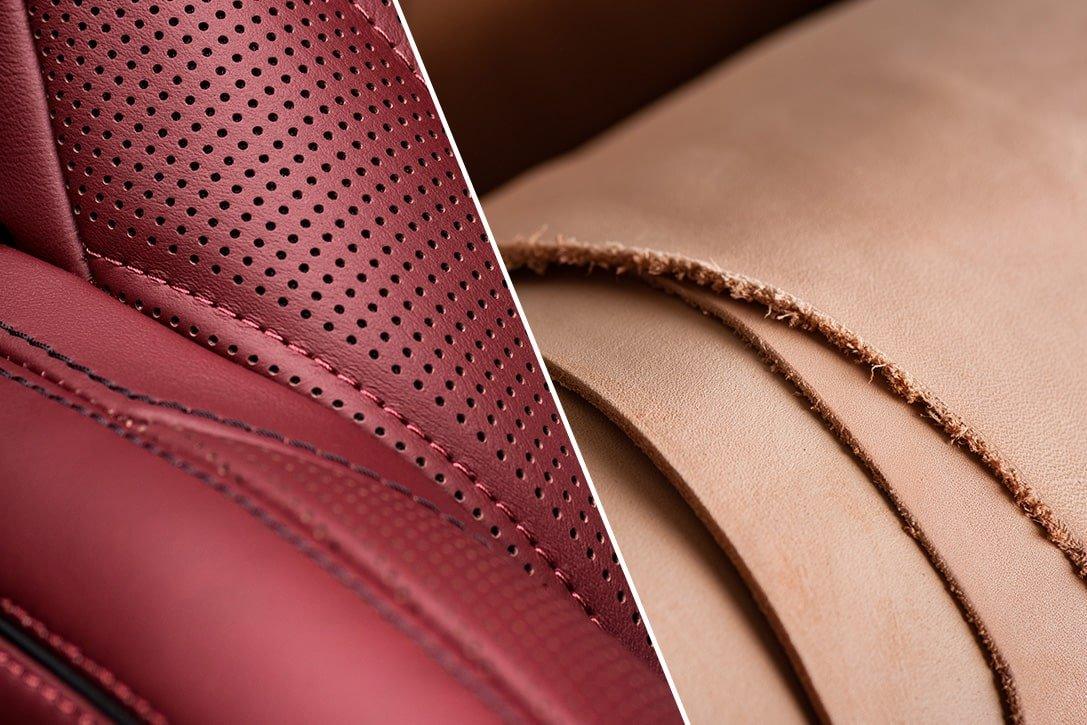
Vegetable Tanned Leather vs. Chrome Tanned Leather: What You Need to Know
Share
Experienced artists and crafters compare vegetable tanned leather vs chrome tanned leather. The professionals of Stonestreet Leather address this and more.
What Is Leather Tanning?
Tanning leather does not mean leaving your leather on the beach so it can get brown from the hot sun. The tanning process refers to turning animal skin or hides into usable and durable leather.
Tanning is about stripping the animal skin of grease, fur, and water to prevent it from rotting. Still, it is a highly specialized process that requires skilled artisans. Draw out too fast, and you will get brittle, dry skin that is not useful for anything.
The tanning method or leather tanning process will usually depend on the type of product to be made from the leather.
There are three major tanning processes: vegetable tanning, chromium tanning, and combination tanning. The tanning solution will usually determine the material's look, durability, and quality.
What Is Vegetable Tanned Leather?
The vegetable tanning process uses organic material, also known as vegetable tannins. Vegetable tannins are made from organic materials such as bark, roots, twigs, and leaves. These are materials high in natural tannins from which the tanning process gets its name.
Plant tannin molecules dehydrate the skin and hides by replacing the water molecules in the collagen, preventing the skin or hides from rotting.
The raw hides or skins are stretched out on wooden frames and then dipped in vats of concentrated tannin compounds in a process that can take up to two months.
The process usually results in durable leather that can be used for different purposes.
What Is Vegetable Tanned Leather Made Of?
Vegetable-tanned leather is usually made, or animal hides dipped into natural tannin solutions to make pliable and durable leathers. There are a number of natural tannins used to make vegetable-tanned leathers. These include oak, Valonea, chestnut, acacia, mimosa bark, swamp yate, and flat-topped yate.
-
Swamp Yate or Flat Topped Yate: With a very high tannin content of between 46-49%- is a West Australian tree that fell out of use when the plant became rare.
-
Oak and Spruce Bark: The bark of young spruce and oak trees usually have a lot of tannins.
-
Valonea Bark: This is a wild Mediterranean oak species from Turkey and Greece with high tannin content in their acorn cups of between 32-45%. Valonea is one of the best tannins for making both tough and soft leather. Moreover, the higher color fastness of Valonea tanned leather is higher than that of most other veg-tanned leather.
-
Acacia and Mimosa Bark: These are good tannins that make leather supple and pliable.
-
Chestnut Bark: This natural tannins produce reddish rugged leather.
What Is Chrome Tan Leather?
Chrome tanned leather is leather made from the chrome tanning method. This method uses chromium sulfate chemical solutions into which skins or hides are dipped. Dipping the skins into the solution draws out the water, thus preventing the raw hides and skins from rotting.
Chrome-tanned leathers tend to be more pliable and softer, even though they are thinner than their vegetable-tanned or combination-tanned leather counterparts, such as the vegetable tan cowhide found here.
What Is Chrome Tanned Leather Made Of?
As compared to the vegetable tanning method, chrome tanning uses chrome ions rather than environmentally friendly vegetable products to tan leather products. When tanning using this method, animal skins and hides are dipped in chromium sulfate solutions.
While the basic principle is the same as vegetable tanning, there are subtle differences. However, both processes remove the water molecules from the collagen and replace them with chemical compounds.
Chrome-tanned leather takes only a day. The Chrome Sulphate ions that displace the water in the skin and bind with the collagen are significantly tinier than the molecules found in vegetable tannins.
Since chrome-tanned leather uses a chemical process, it tends to have a negative environmental impact compared to natural vegetable-tanned leather.
How To Tell the Difference Between Vegetable Tanned and Chrome Tanned Leather?
Chrome-tanned leather tends to have more vibrant colors, given that it is more synthetic, even if more expensive. Conversely, vegetable-tanned leather is often a more earthy and superior leather product.
Vegetable-tanned leather is a natural beauty that ages beautifully, as it develops a rich patina, while the chrome-tanned leather product will deteriorate relatively fast, comes with a chemical smell, and will not leave you some pleasant little surprises.
Over time, vegetable-tanned products such as the red vegetable tanned leather coaster shapes will become better with use and more supple to the touch. Still, the chrome-tanned leather will only deteriorate in quality over time.
Is Chrome Tan Leather Good?
While chrome-tanned leather receives a bad rap, it has a few advantages over vegetable-tanned leather. Chrome-tanned leather is more water resistant than veg-tanned leather, which means it is excellent for use in the auto industry to make shoes, furniture, gloves, and boots which may call for water repellent leather.
Is Veg Tan Leather Better?
Vegetable-tanned leather is not necessarily better than chrome-tanned leather as there are high-quality products made of either.
Still, vegetable tannin has often been associated with quality and heritage. Nonetheless, the final product is a bit stiff and brittle and is known to be more durable if fashioned by a skilled craftsman and can be used to make high-quality products such as Green vegetable tanned leather coaster shapes.
On the flip side, chrome tanning offers softer leather and more color options which is why it is used a lot more in the fashion industry.
Shop and take your pick between various quality products from our regular and colored collections of Vegetable tanned leather!
